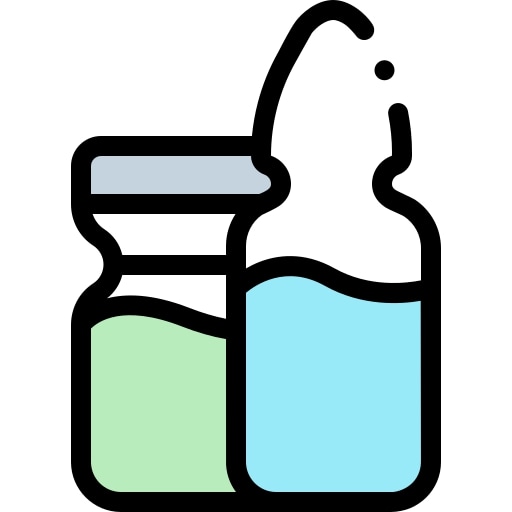N-ACETYLCYSTEINE, 200mg/ml, 10ml, amp.
Valid Article
N-ACETYLCYSTEINE
Therapeutic Action
Antidote
Indications
Acute paracetamol toxicity in the following situations:
- Patients with acute ingestion and paracetamol concentrations in the possible or probable toxic range on the Rumack-Mathew nomogram. In contexts where paracetamol concentrations are not routinely available (e.g., MSF contexts), empiric treatment may be indicated.
- Indications for empiric treatment:
- history (or collateral history) consistent with a supratherapeutic ingestion of paracetamol, and
- presence of clinical features consistent with stage 1, 2, or 3 paracetamol toxicity
- evidence of hepatic damage (elevated ALT, +/- elevated AST)
- +/- elevated creatinine
- Patients presenting late after paracetamol ingestion with any of the following:
- evidence of hepatic injury (elevated ALT/AST),
- hepatic failure (coagulopathy and encephalopathy), or
- repeated supratherapeutic ingestion.
Instructions for use
Must be given as slow IV infusion using an infusion or syringe pump.
Intravenous N-acetylcysteine, given within 24 hours of ingestion of a potentially hepatotoxic overdose of paracetamol, is indicated to prevent or reduce the severity of liver damage.
Dosage:
Loading infusion over 4 hours then maintenance infusion over 20 hours (for a minimum of 24 hours of IV N-acetylcysteine).
Adults:
- Loading dose: 150 mg/kg in 200 ml of 5% dextrose over 1 h
- Dose 2: 50 mg/kg in 500 ml of 5% dextrose over 4 hours
- Dose 3: 100 mg/kg in 1000 ml of 5% dextrose over 16 hours
Children:
- 200-240 mg/kg over the first 4 hours
- 100-120 mg/kg over the next 20 hours
The duration of treatment will depend on the patient's clinical progress and serial laboratory tests. Reassessment at least after 24 hours, then at least every 12 hrs.
Only to be used if laboratory monitoring of plasma paracetamol levels is available.
Precautions for Use
The risk of adverse reactions after intravenous infusion increases if the medication is administered too quickly or in too large quantity.
Storage
Below 25ºC Protect from sunlight


![[DINJPARA1B-] PARACETAMOL (acetaminophen), 10mg/ml, 100ml, bot.](/web/image/product.template/569865/image_256/%5BDINJPARA1B-%5D%20PARACETAMOL%20%28acetaminophen%29%2C%2010mg-ml%2C%20100ml%2C%20bot.?unique=4af3067)
![[DINJPARA1FBF] PARACETAMOL (acetaminophen),10mg/ml,100ml, flex.bag PVC free](/web/image/product.template/572610/image_256/%5BDINJPARA1FBF%5D%20PARACETAMOL%20%28acetaminophen%29%2C10mg-ml%2C100ml%2C%20flex.bag%20PVC%20free?unique=a2b197d)
![[DINJPARA5B-] PARACETAMOL (acetaminophen), 10mg/ml, 50ml, bot.](/web/image/product.template/572405/image_256/%5BDINJPARA5B-%5D%20PARACETAMOL%20%28acetaminophen%29%2C%2010mg-ml%2C%2050ml%2C%20bot.?unique=af618c2)
![[DINJPARA5FBF] PARACETAMOL (acetaminophen),10mg/ml, 50ml, flex.bag PVC free](/web/image/product.template/572092/image_256/%5BDINJPARA5FBF%5D%20PARACETAMOL%20%28acetaminophen%29%2C10mg-ml%2C%2050ml%2C%20flex.bag%20PVC%20free?unique=4af3067)
![[EEMDINPE4F-] INFUSION PUMP (Agilia VP Z019512) 100-240V 50/60Hz FR](/web/image/product.template/572535/image_256/%5BEEMDINPE4F-%5D%20INFUSION%20PUMP%20%28Agilia%20VP%20Z019512%29%20100-240V%2050-60Hz%20FR?unique=c093711)
![[EEMDSYPE41F] SYRINGE PUMP (AGILIA SP MC Z018612), single syr.,drug lib.FR](/web/image/product.template/569733/image_256/%5BEEMDSYPE41F%5D%20SYRINGE%20PUMP%20%28AGILIA%20SP%20MC%20Z018612%29%2C%20single%20syr.%2Cdrug%20lib.FR?unique=50da7a5)